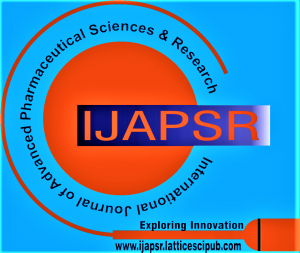![]()
Overview of the Role of Chromatographic Modes in Pharmaceutical Peptide Analysis
Ayat Abbood
Ayat Abbood, Department of Medicinal Chemistry and Quality Control, Faculty of Pharmacy, University of Tishreen, (Latakia), Syria.
Manuscript received on 16 January 2025 | First Revised Manuscript received on 23 January 2025 | Second Revised Manuscript received on 03 February 2025 | Manuscript Accepted on 15 February 2025 | Manuscript published on 28 February 2025 | PP: 22-29 | Volume-5 Issue-2, February 2025 | Retrieval Number: 100.1/ijapsr.B406805020225 | DOI: 10.54105/ijapsr.B4068.05020225
Open Access | Editorial and Publishing Policies | Cite | Zenodo | OJS | Indexing and Abstracting
© The Authors. Published by Lattice Science Publication (LSP). This is an open-access article under the CC-BY-NC-ND license (http://creativecommons.org/licenses/by-nc-nd/4.0/)
Abstract: Peptides represent promising candidates for medical treatments. They can be designed for high specificity, which minimises the adverse effects. Ensuring their purity, identity, and quality is crucial to their therapeutic efficacy. Peptides exhibit different physical and chemical properties (such as charge, pI, hydrophobic nature, size, etc.). These characteristics complicate the separation of a mixture of peptides. Various analytical techniques were employed for peptide purification, mapping, and identification. HPLC remains the preferred method for analysing peptides. Different HPLC modes were applied to separate peptides from their impurities and related substances. Among these modes, ion exchange, reversed-phase, normal-phase, and HILIC were performed to achieve peptide separation. This review will discuss chromatographic techniques and their role in peptide analysis, including the study of peptide mixtures, the creation of peptide maps, and the isolation of the peptide of interest from associated compounds.
Keywords: Peptides, Analysis, Quality, Chromatographic Modes.
Scope of the Article: Medicinal Chemistry
